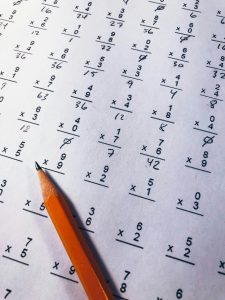How to Create Your Own Math Puzzles at Home

Are you a parent looking for a way to ignite your child’s love for mathematics? Do you want to find a fun and engaging activity that can improve their critical thinking and problem-solving skills? Look no further! Creating your own math puzzles at home is an excellent way to make learning enjoyable and interactive for your child. In this article, we will guide you through the steps of designing easy puzzles that will captivate your child’s interest and enhance their mathematical abilities.
Step 1: Choose the Type of Puzzle
The first step in creating math puzzles is to decide on the type of puzzle you want to make. There are various options to choose from, depending on your child’s interests and age. Some popular types of puzzles include magic squares, crossword puzzles, logic puzzles, and riddles. Let’s explore each option in detail:
Magic Squares: Magic squares are grids where the sum of each row, column, and diagonal is the same. They provide an excellent opportunity for children to practice basic arithmetic operations while developing their spatial reasoning skills.
Crossword Puzzles: Adapt traditional crossword puzzles by replacing words with numbers. Create clues that lead to mathematical answers, such as addition or subtraction problems. Crossword puzzles are beneficial for reinforcing math facts and vocabulary.
Logic Puzzles: Logic puzzles require children to use deductive reasoning to find the solution. Create scenarios where they have to analyze clues and make logical deductions. These puzzles improve critical thinking skills and logical reasoning abilities.
Riddles: Formulate math-related riddles that require creative thinking to solve. Riddles engage children’s minds and encourage them to think outside the box while applying their mathematical knowledge.
Step 2: Determine the Difficulty Level
After choosing the type of puzzle, it’s essential to tailor the difficulty level to match your child’s age and skill level. For younger children, focus on simple addition or subtraction puzzles. As they grow older and more proficient in math, introduce more complex concepts, such as multiplication, division, or algebraic equations. By adjusting the difficulty level, you ensure that the puzzles remain challenging yet accessible for your child.
Step 3: Incorporate Real-Life Scenarios
To make the puzzles more relatable and engaging for your child, incorporate real-life scenarios into the puzzle design. Word problems are an excellent way to connect math to practical situations. For example, you can create a puzzle that asks, “If a school has 240 students and 3/5 are boys, how many boys are there?” This type of puzzle helps children understand the practical applications of math in everyday life.
Another fun idea is to organize a scavenger hunt where you hide items around the house and create math questions related to finding them. For example, you could ask your child to solve a simple equation to reveal the clue to the next item’s location. This combines the thrill of a treasure hunt with the educational benefits of solving math problems.
Step 4: Use Visual Aids
Visual aids can significantly enhance your child’s engagement with math puzzles. Consider including drawings or diagrams for puzzles that involve tangrams or geometric shapes. These visual elements allow children to manipulate objects and learn through hands-on experiences.
Additionally, using colorful materials can make learning more exciting. Use colored paper or objects like bottle caps for hands-on activities such as magic squares. The vibrant colors will capture your child’s attention and make the puzzles visually appealing.
Step 5: Create Clear Instructions
To ensure that your child understands how to solve the puzzles, it’s crucial to provide clear and concise instructions. Write the instructions in a straightforward manner, using simple language that is easy for your child to comprehend. If necessary, include examples to illustrate how to solve the puzzle step by step. Clear instructions will empower your child to tackle the puzzles independently and build their confidence in problem-solving.
Step 6: Test Your Puzzles
Before presenting the puzzles to your child, take some time to solve them yourself or have someone else try them out. Testing the puzzles allows you to identify any ambiguous or challenging aspects that might need clarification. By troubleshooting potential issues in advance, you can ensure a smooth and enjoyable experience for your child.
Step 7: Encourage Collaboration
Math puzzles can be even more engaging when solved together as a family or with friends. Encourage collaboration by inviting your child’s siblings, cousins, or friends to join in the puzzle-solving fun. Working as a team not only makes the experience more enjoyable but also promotes teamwork and communication skills.
Step 8: Provide Feedback and Rewards
After your child completes a puzzle, take the time to discuss the solutions together. Offer positive reinforcement and praise their efforts. Celebrate their achievements, no matter how small, to motivate them to continue engaging with math puzzles. Consider providing small rewards or incentives for their participation and effort. This will create a positive association with math and encourage them to embrace learning in an enjoyable way.
Creating your own math puzzles at home is an effective way to engage your child with mathematics while making learning fun and interactive. By choosing the right type of puzzle, adjusting the difficulty level, incorporating real-life scenarios, using visual aids, providing clear instructions, and encouraging collaboration, you can ignite your child’s love for math and enhance their critical thinking skills.
If you are looking for a structured program that focuses on developing your child’s mental math abilities, consider enrolling them in the SIP ABACUS program. SIP ABACUS uses the abacus tool and visualization techniques to teach children mental math skills from ages 6-12. The curriculum is divided into Junior, Foundation, Advanced, and Grand Master modules with structured levels and a proven track record. The program incorporates fun learning, interactive software, and materials designed to engage children.
Studies have shown that children who complete the SIP ABACUS program perform significantly better in math and reading at school, often achieving levels three to four years ahead of their peers within two years of joining the program. The unique approach of developing both sides of the brain through abacus learning has proven effective in nurturing children’s academic and overall growth.
So, let’s embark on this math puzzle adventure with your child! Create your own puzzles at home and watch their mathematical abilities flourish while having fun along the way.



